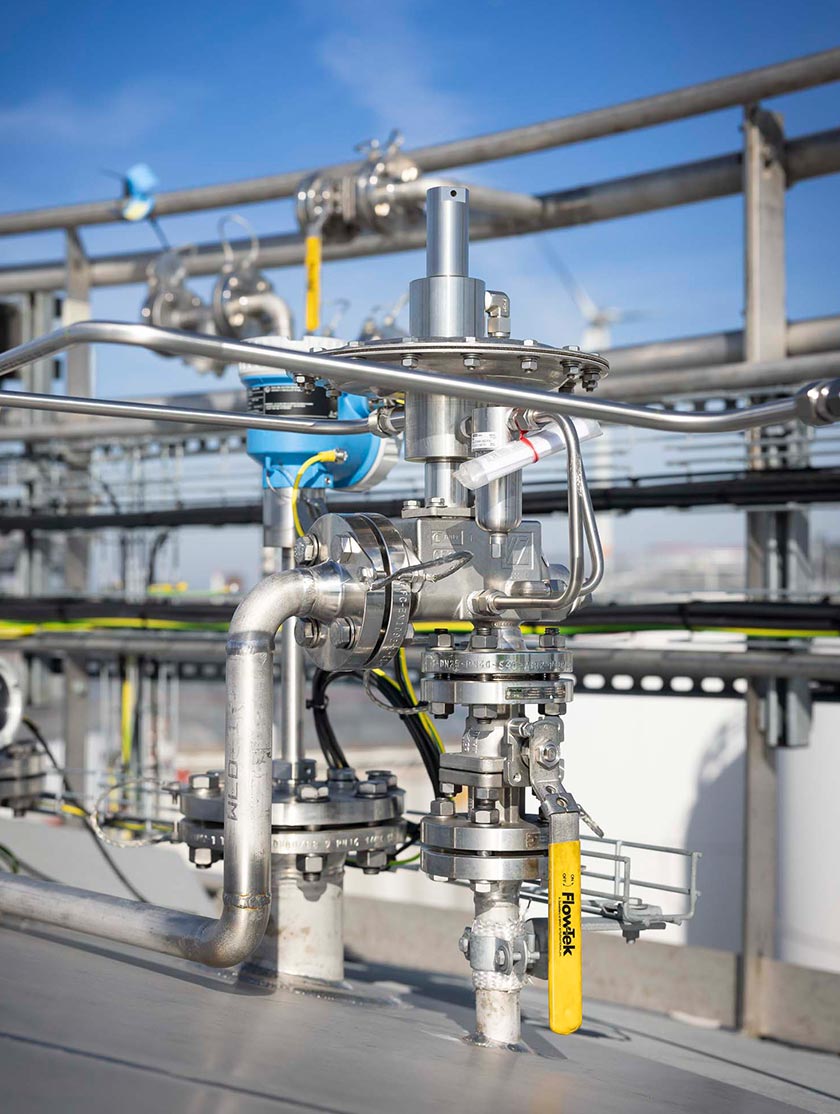How Pressure Reducing Regulators Ensure Consistent Pressure
How do pressure reducing regulators help maintain constant pressure levels under varying flow conditions?
In many industrial and residential applications, maintaining a constant pressure level is critical to the safe and efficient operation of equipment and systems. Pressure fluctuations can cause property damage, inefficient operation, safety hazards and increased maintenance costs. This is where pressure reducing regulators play a vital role. These devices are specifically designed to maintain a stable downstream pressure despite changes in upstream pressure and flow rate.
What is a pressure reducing regulator?
A pressure reducing regulator (also referred to as pressure regulator) is a mechanical device that automatically reduces a high inlet pressure to a lower, stable outlet pressure. It ensures that the downstream pressure remains within a specified range, regardless of changes in upstream pressure or flow rate. Pressure reducing regulators are commonly used in gas and liquid systems where pressure control is critical, such as natural gas distribution, steam boilers, water supply systems, and compressed air systems.
How does a pressure reducing regulator work? The basic principle of a pressure reducing regulator is to balance the forces acting on a valve mechanism to maintain the desired downstream setpoint pressure. Typical components include:
- Valve or seat: Controls flow by opening or closing.
- Sensing diaphragm or piston: Senses the downstream pressure.
- Spring mechanism: Exerts a force set by an adjustment screw to establish the desired outlet pressure.
When the downstream pressure drops below the setpoint, the spring pushes the valve open, allowing more fluid or gas to flow. As the flow rate and pressure increase, the diaphragm senses this increase and pushes the valve toward the closed position. This balance continually adjusts the valve position to maintain a constant downstream pressure.
Maintaining a constant pressure under varying flow conditions
A major challenge in fluid and gas distribution systems is the variability of demand or flow. Pressure reducing regulators address these variations through the following mechanisms:
- Dynamic flow response: As flow demand increases downstream, the control valve modulates to allow for more flow while simultaneously adjusting to maintain the desired pressure. As flow demand decreases, the valve partially closes to reduce flow, preventing pressure spikes.
- Compensation for upstream pressure fluctuations: Inlet pressure variations, common in many fuel systems, can compromise the delivery of a stable pressure. The regulator senses changes in downstream pressure, not inlet pressure, and adjusts the valve accordingly. Even as upstream pressure increases or decreases, downstream pressure remains within preset limits.
- Minimizing the Impact of Pressure Drop: Properly designed pressure reducing regulators maintain a constant pressure even under variable pressure drops due to flow rate variations, pipe friction, or turbulence.
- Feedback Mechanism: Modern pressure reducing regulators may also incorporate sensing elements that provide continuous feedback, allowing the device to respond quickly to transient flow conditions without exceeding the set pressure.
Benefits of Using Pressure Reducing Regulators
- Increased Safety: Prevents downstream equipment from being exposed to unsafe pressure levels.
- Increased Equipment Longevity: Consistent pressure reduces wear.
- Energy Efficiency: Optimizes system performance by maintaining stable operating conditions.
- Reduced Maintenance Costs: Limits the need for repairs caused by pressure spikes or inadequate pressure.
- Operational Stability: Ensures reliable operation of processes that rely on accurate pressure inputs.
Conclusion
Pressure reducing regulators are indispensable components in fluid systems and gas applications that require stable pressure control. By automatically compensating for fluctuations in upstream flow and pressure, they maintain constant downstream pressure levels, improving system safety, efficiency and reliability. Their dynamic control capability makes them an essential technology for managing variable flow conditions in a wide range of industrial, commercial and residential applications.
Need the Right Pressure Reducing Regulator? Get Expert Help Selecting the Ideal Regulator Engineered for Performance |
Cashco’s pressure reducing regulators are designed for precise pressure control across a wide range of industrial applications—delivering reliability, safety, and efficiency. For more information about Cashco's regulators, view all models here .
Cashco's priority is to make sure you select the right product for your application. Need help sizing your regulator? Complete our Regulator Sizing Form and our experienced team will gladly assist you in finding the ideal product!
Animated Guide: Pressure Reducing Regulator Function |
Discover the workings of a pressure reducing regulator in our animation video. Using the force-balance principle, this device reduces and maintains downstream pressure in a pipeline. Watch as we demonstrate how the regulator’s diaphragm and valve assembly create resistance to reduce upstream pressure. Learn how downstream flow demands impact the regulator, causing it to adjust and maintain a constant pressure.





